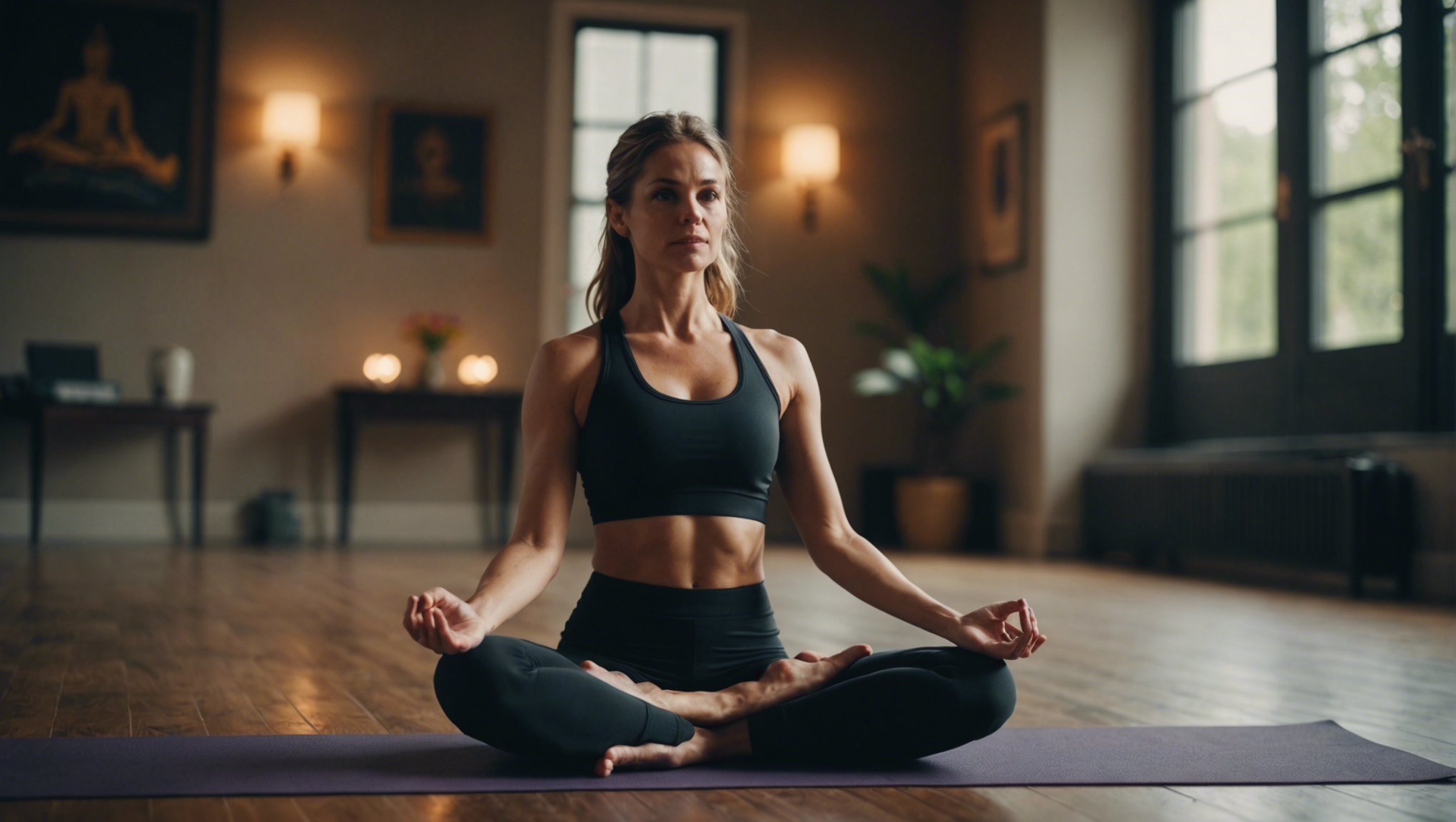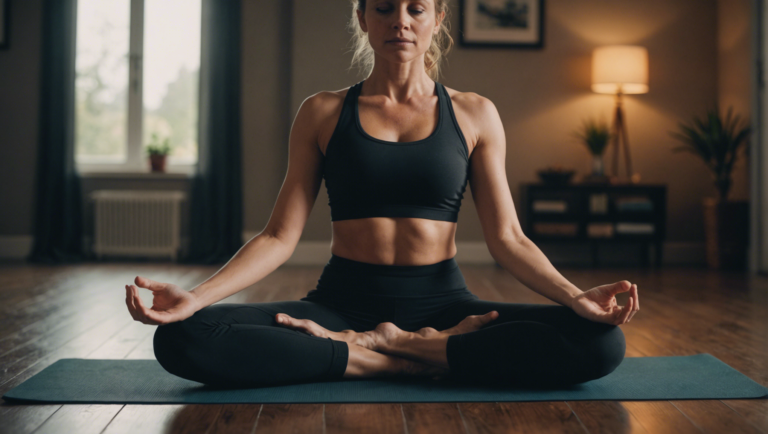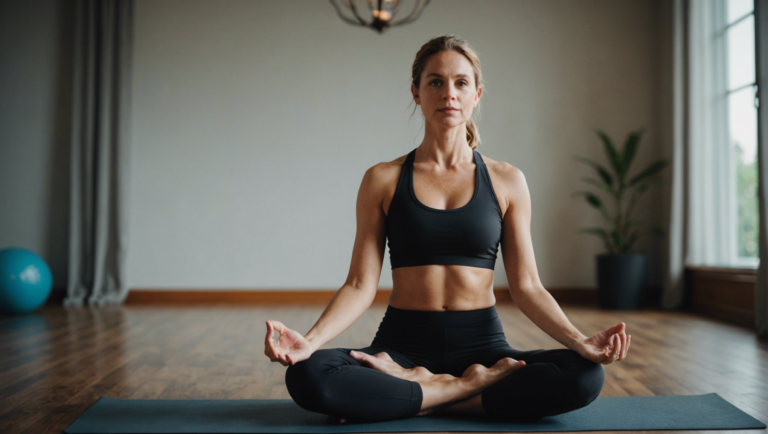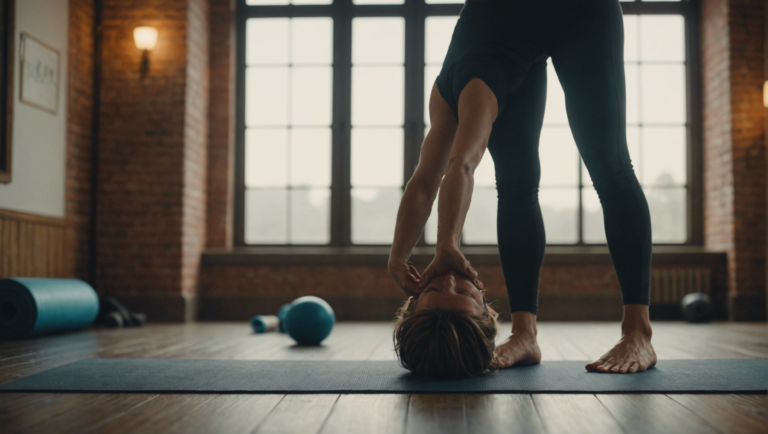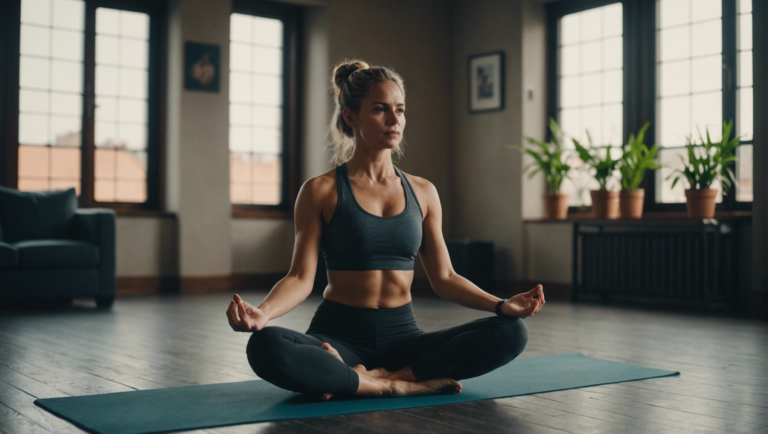Exploring The Variety: How Many Yoga Poses Are There In The World?
The Enigmatic Count of Yoga Poses: Navigating Through Tradition and Modern Practices
From the serene banks of the Ganges to the bustling streets of New York, yoga has woven its way through time and culture, morphing into a tapestry of practices that reflect the diversity of its practitioners. At its core, yoga is the union of body, mind, and spirit, achieved through the practice of asanas or poses. Yet, as yoga’s popularity surges worldwide, a common question emerges: How many yoga poses are there exactly? This inquiry takes us on a fascinating journey through tradition, modern innovation, and everything in between.
The Roots of Yoga and Its Classical Poses
Yoga’s origins can be traced back over 5,000 years in ancient India, encapsulated in the Sanskrit scriptures of the Vedas and the philosophical teachings of the Yoga Sutras of Patanjali. Traditionally, yoga was more than physical exercise; it was a way of life, encompassing ethics, meditation, breath control, and the practice of asanas. The Yoga Sutras, a foundational text authored by the sage Patanjali, outline only a handful of poses—mainly seated positions for meditation.
Yet, even within these ancient texts, the seeds of diversity were planted. The Hatha Yoga Pradipika, a classic 15th-century yoga manual, describes 15 asanas, marking a significant expansion but still hinting at a much vaster potential. The evolution from a focus on meditation to a more comprehensive system incorporating physical health and well-being set the stage for the explosion of asana practices seen today.
The Explosion of Modern Yoga and Its Asanas
The 20th century heralded a new era for yoga, transforming it from a predominantly meditative practice to a global phenomenon that emphasizes physical well-being and fitness. Influential figures like B.K.S. Iyengar, T.K.V. Desikachar, and Pattabhi Jois played pivotal roles in popularizing yoga in the West, each introducing their styles and sequences. Iyengar Yoga, for instance, is known for its focus on alignment and the use of props, while Ashtanga Yoga emphasizes a predefined sequence of poses performed in a flow.
This globalization and blending of styles have led to an exponential increase in the number of yoga poses. Today, the count goes well beyond the classical texts, with variations and modifications expanding the repertoire. Modern practitioners have adapted poses to suit all levels of ability, health conditions, and even personal preferences, resulting in a proliferation of asanas that reflect the diversity and inclusivity of yoga practice.
Quantifying the Unquantifiable: The Number of Yoga Asanas
Attempting to determine the exact number of yoga poses is akin to counting the stars in the sky; the number is ever-expanding and highly subjective. Traditionalists might argue that only the poses outlined in ancient scriptures qualify, while modern practitioners recognize the value in innovation and adaptation. Some estimates suggest that there are thousands of yoga poses, considering variations and combinations.
Moreover, yoga is a living practice, evolving with each generation of teachers and students. New asanas are created to address contemporary needs, and ancient poses are rediscovered or adapted, making any attempt at a definitive count both futile and counter to the spirit of yoga. Instead of focusing on numbers, the emphasis is on the quality of practice, the understanding of each pose, and the individual’s journey through yoga.
The Journey Through Tradition and Modern Practices
As we navigate the enigmatic landscape of yoga asanas, from ancient tradition to modern innovations, we are reminded that the essence of yoga transcends the physical poses. Yoga is a journey of self-discovery, a way to connect with our inner essence, and a practice for cultivating health and well-being. Whether there are hundreds of poses or thousands, each asana is a gateway to understanding the self, unlocking the potential of the mind, and harmonizing the spirit.
The diversity of yoga poses is a testament to the adaptability and inclusiveness of yoga as a practice. Each pose, whether rooted in ancient tradition or born of contemporary creativity, offers a unique path to balance, strength, and tranquility. In the end, the true count of yoga poses is as boundless as the practice itself, evolving with each breath and every movement on the mat.
The Evolution of Yoga Poses: From Ancient Texts to Modern Studios
The Timeless Journey of Yoga Poses
The journey of yoga from its roots in ancient civilization to the contemporary studios we know today is a fascinating expedition that transcends time and culture. Yoga, originally conceived as a practice to unite the body, mind, and spirit, has evolved significantly, with its poses or asanas taking on new forms and interpretations. This evolution is not merely a testament to yoga’s adaptability but also to its enduring relevance and appeal across millennia.
Ancient Beginnings and Textual Foundations
Yoga’s origins can be tracked back to over 5,000 years ago in the Indus-Sarasvati civilization in Northern India. The earliest references to yoga were found in the Vedas, ancient sacred texts of spiritual knowledge. However, the most detailed and comprehensive compilation of yoga practices and philosophy is found in the Yoga Sutras of Patanjali, dating back to the 2nd century BCE. These texts laid the foundation for many of the yoga poses practiced today.
Patanjali’s Yoga Sutras detailed the eight limbs of yoga, among which "asana" or the physical posture is just one aspect. Initially, asanas focused more on achieving mental and spiritual states conducive to meditation rather than physical exercise. Early texts mention a modest number of these poses, often less than twenty, focusing on seated positions that aided meditation and breath control.
Evolution under Various Yoga Schools
Over centuries, as yoga traversed through different cultures and societies, its practice witnessed significant transformations. Between the 15th and 17th centuries, texts like the "Hatha Yoga Pradipika" introduced more asanas, including postures that were more physical and aimed at purifying the body. The number of poses expanded as different schools of yoga emerged, each adding layers of complexity and nuance to the practice.
In the 20th century, yoga masters like Tirumalai Krishnamacharya, often referred to as the "Father of Modern Yoga," played a pivotal role in popularizing yoga worldwide. Krishnamacharya’s teachings formed the foundation for several styles of yoga that are popular today, such as Ashtanga, Iyengar, and Vinyasa. Under his influence, yoga became more dynamic, with an increased focus on sequences of poses and the integration of breath control with movement.
The Global Yoga Renaissance
The latter half of the 20th century witnessed a yoga boom in the Western world. As yoga gurus traveled to the West and Western students visited India, there was a cross-pollination of ideas and practices, leading to the birth of numerous modern yoga styles. This period also saw yoga’s transformation from a meditative and spiritual practice to a form of physical exercise and relaxation, catering to the lifestyles of people in the modern era.
Today, there are thousands of yoga poses, and variations adapted to different needs, abilities, and objectives. Yoga classes can range from gentle and restorative to physically challenging and vigorous. Technology and digital media have further democratized yoga, making it accessible to a global audience through online classes and apps.
The Essence of Yoga Remains Unchanged
Despite the significant evolution and diversification of yoga poses, the essence of yoga as a holistic practice remains unchanged. Yoga continues to be a tool for personal transformation, offering benefits that extend beyond physical health to include mental clarity, emotional balance, and spiritual wellbeing. The adaptability of yoga poses over centuries underscores its universal appeal and the ability for practitioners to find personal relevance in their practice.
The evolution of yoga poses from ancient texts to modern studios showcases a remarkable journey of adaptation and resilience. As yoga continues to evolve, it remains a testament to the timeless quest for harmony between the body, mind, and spirit, affirming its relevance across ages and cultures.
The Role of Sequencing in Understanding the Complexity of Yoga Poses
Yoga, an ancient practice rooted in Indian philosophy, has evolved significantly over thousands of years. It integrates physical, mental, and spiritual disciplines aiming for harmony between the mind, body, and environment. As yoga has spread worldwide, its complexity and diversity in poses (asanas) have attracted myriad enthusiasts, each seeking something unique from their practice. Central to understanding this rich tapestry of asanas is the concept of sequencing, a methodical arrangement of poses that enhances the yoga practice’s effectiveness and safety.
The Essence of Sequencing in Yoga
Sequencing in yoga is more than just a random assembly of poses. It is a carefully crafted progression designed to prepare the body and mind for more challenging postures, achieve specific thematic objectives, and ensure a balanced practice. A well-sequenced session guides practitioners from simpler, warming poses to more complex asanas, before winding down with cooling, restorative postures. This flow not only aids in physical conditioning but also supports mental clarity and emotional stability.
Understanding the Body’s Energy Flow
The concept of energy flow is pivotal in yoga practice. Each pose is believed to influence the flow of energy (prana) through the body’s channels (nadis), affecting our physical, emotional, and spiritual well-being. Sequencing plays a vital role in optimizing this energy flow, ensuring that the practice builds prana progressively without causing blockages or depletions. By understanding how different poses influence energy centers (chakras), practitioners can create sequences that foster a sense of balance and harmony.
Strengthening and Stretching: A Balanced Approach
An intelligent sequencing strategy equally emphasizes strength building and flexibility enhancement. Early parts of a sequence often focus on generating heat and building strength through standing poses and dynamic movements. This approach not only warms up the body but also establishes a foundation of stability and power. As the sequence progresses, it incorporates more stretching-focused asanas, which allow the muscles to elongate and release tension, leading to increased flexibility and relaxation.
Addressing Individual Needs through Sequencing
Sequencing also provides a framework for personalization, making yoga accessible and beneficial to individuals at different levels of ability and with various health considerations. For beginners, a sequence may prioritize foundational poses that build strength and flexibility gradually. For more experienced practitioners, a sequence might introduce advanced asanas that challenge balance, flexibility, and concentration. Therapeutic sequences, on the other hand, are designed to address specific health issues, emphasizing poses that alleviate symptoms or aid in recovery.
Navigating the Mental Landscape with Mindful Sequencing
Beyond physical postures, sequencing incorporates breathing techniques (pranayama) and meditation (dhyana) to deepen the yoga practice. The integration of these elements encourages a holistic experience, where physical movements are synchronized with breath and the mind is guided towards a state of focus and introspection. This mindful approach to sequencing enhances the capacity for self-awareness and inner peace, core objectives of the yoga tradition.
The Art and Science of Sequencing
Creating effective yoga sequences is both an art and a science. It requires an understanding of anatomy, physiology, and yoga philosophy, combined with intuition and creativity. Yoga teachers develop their sequencing skills over years of practice and study, continually learning from each class they lead and every student they teach. This ongoing process of exploration and refinement ensures that yoga remains a dynamic and evolving practice.
Sequencing is the thread that weaves together the diverse elements of yoga, making each practice a unique journey. Through mindful sequencing, practitioners can explore the vast landscape of yoga poses in a way that respects their individual needs and goals, while honoring the ancient wisdom from which these practices emerged. Whether you’re a seasoned yogi or a curious newcomer, understanding the role of sequencing can deepen your appreciation for the complexity and beauty of yoga.
The Impact of Cultural Diversity on the Expansion of Yoga Poses Worldwide
Yoga, an ancient practice that originated in India over 5,000 years ago, has transcended its geographical roots and blossomed into a global phenomenon. This transformation has not been merely quantitative but qualitative, expanding and diversifying the practice in ways that reflect the rich tapestry of global cultures.
The Enrichment of Yoga Poses through Cultural Diversity
The evolution of yoga is a testament to the adaptability and resilience of traditional practices in the modern world. As yoga traversed borders, it encountered diverse cultures, each adding its unique flavor. This cross-pollination of cultural practices has led to an expansion and enrichment of yoga poses (asanas), techniques, and philosophies.
In the West, for example, the physical aspect of yoga, particularly the asanas, gained prominence. This emphasis led to the development of styles like Power Yoga and Vinyasa, which are characterized by a dynamic sequence of poses designed to build strength and flexibility. These styles, though rooted in the traditional Ashtanga system, represent a Western adaptation that caters to contemporary fitness goals.
Global Influences on Yoga’s Spiritual Practice
Beyond the physical, the spiritual and philosophical elements of yoga have also adapted to align with different cultural perspectives. In many Eastern traditions, yoga is inherently linked to spirituality and is practiced as a means to achieve enlightenment or liberation (Moksha). In contrast, in Western cultures, while the spiritual aspect is acknowledged, there is often a greater focus on yoga as a tool for mental health, stress reduction, and overall well-being.
This global dialogue has facilitated the emergence of new meditation techniques and philosophies that integrate the ancient wisdom of yoga with contemporary psychological insights. For instance, the practice of mindfulness-based stress reduction (MBSR) combines traditional Buddhist meditative practices with yoga to help individuals cope with stress, anxiety, and pain.
The Role of Technology and Social Media
Technology, particularly social media, has played a pivotal role in the globalization and diversification of yoga. Platforms like Instagram and YouTube have allowed yoga practitioners and teachers from around the world to share their unique styles and philosophies, thus fostering a global community of yogis connected by a shared practice but diversified in approach.
Through online workshops and virtual classes, individuals can now access a wide variety of yoga styles that were previously limited by geographical boundaries. This digital accessibility has not only democratized yoga, making it more accessible to diverse populations but has also contributed to the creative expansion of yoga poses and practices.
Preserving the Essence of Yoga Amidst Cultural Diversification
As yoga continues to evolve through its interaction with diverse cultures, a critical discourse has emerged around the importance of preserving the essence and integrity of the practice. While cultural diffusion has enriched yoga, there is a growing awareness of the need to honor and respect its origins and philosophical core.
Many practitioners and teachers are now emphasizing the importance of integrating the traditional aspects of yoga, such as ethical principles (Yamas and Niyamas), breath control (Pranayama), and meditation (Dhyana), with the physical practices. This holistic approach ensures that yoga remains a comprehensive discipline that nurtures the body, mind, and spirit.
The impact of cultural diversity on the expansion of yoga poses worldwide illustrates the dynamic interplay between tradition and innovation. As yoga continues to be embraced by different cultures, it will inevitably continue to evolve, reflecting the changing needs and insights of its global practitioners. However, the fundamental principles of yoga – unity, mindfulness, and harmony – remain universal, transcending cultural boundaries and connecting individuals across the globe in a shared practice of self-discovery and well-being.
The Future of Yoga: Innovations and Tradition in the Digital Age
As yoga continues to evolve from its ancient roots, the practice is embracing technological advancements and innovative approaches. This synergy between tradition and innovation is not only making yoga more accessible but is also broadening its appeal and application in the digital age.
Exploring the Digital Transformation of Yoga
The digital revolution has significantly altered how yoga is practiced, taught, and learned. Online platforms, virtual classes, and mobile apps have democratized access to yoga, allowing practitioners from all over the world to participate in classes that would have been geographically out of reach. This transition to digital mediums has also opened the door to a variety of yoga styles, teachings, and philosophies, enhancing the diversity and richness of the practice.
Moreover, virtual reality (VR) and augmented reality (AR) are beginning to make their way into the yoga sphere. These technologies offer immersive experiences that can transport practitioners to serene environments, potentially deepening the practice by enhancing focus and reducing distractions. While still in its infancy, the fusion of VR and AR with yoga promises a future where the boundaries of space are no longer a limitation to the practice.
The Role of Wearable Technology in Personalizing Yoga Practice
Wearable technology is another innovation shaping the future of yoga. Devices that track heart rate, body temperature, and movement are providing yogis with detailed feedback about their practice. This data can help practitioners optimize their sessions, adjust their postures for better alignment and safety, and track their progress over time. As wearable technology becomes more sophisticated, it offers the potential to personalize yoga practices to an individual’s specific needs, enhancing both the effectiveness and safety of the practice.
Furthermore, smart yoga mats equipped with sensors and connectivity are being developed to offer real-time feedback on poses, balance, and alignment. These mats can help beginners learn proper techniques and assist seasoned practitioners in refining their poses, making the practice more rewarding and effective for all levels.
Blending Tradition with Innovation for Enhanced Mindfulness
While technology is playing a pivotal role in shaping the future of yoga, there’s a conscious effort to preserve the essence and traditions of the practice. Yoga apps and platforms often include content that delves into the philosophical and spiritual aspects of yoga, ensuring that the practice remains holistic and grounded in its roots. This blend of old and new is facilitating a deeper understanding and appreciation of yoga, catering to a growing interest in mindfulness and mental well-being.
AI-powered personal yoga instructors are another frontier exploring the balance between innovation and tradition. These artificial intelligence systems can guide users through customized yoga sessions, offering adjustments and suggestions just like a human instructor would. By leveraging machine learning, these digital instructors can evolve with the user, offering tailored advice that aligns with the individual’s changing needs and abilities.
Sustainable Yoga Practices and the Environment
The integration of technology in yoga is also opening up discussions around sustainability and environmental responsibility. Online classes reduce the need for physical spaces, cutting down on resource use and emissions related to travel. Digital delivery of yoga content minimizes the need for physical books, DVDs, and other materials, further reducing the environmental footprint of the practice.
Final Thoughts
The future of yoga is being shaped by a harmonious blend of ancient traditions and cutting-edge innovations. As technology continues to evolve, it offers new opportunities to enhance and personalize the practice while making it more accessible to a global audience. This evolution, rooted in the core principles of yoga, ensures that the practice remains relevant, transformative, and inclusive in the digital age. The journey of yoga, from its ancient origins to its digital future, reflects a continuous thread of adaptation and renewal, promising an ever-evolving path toward wellness and mindfulness for people around the world.
Conclusion
As we delve deep into the tapestry that forms the world of yoga, we uncover a rich heritage spanning millennia, a tradition that has traversed from the sacred texts of ancient India to the bustling, vibrant yoga studios of the modern world. The journey of understanding the vast array of yoga poses encapsulates more than just a count; it embodies the evolution of a practice that is as spiritual as it is physical, as individual as it is universal.
The quest to quantify yoga poses leads us through the enigmatic interplay between tradition and innovation, where the roots of yoga entwine with contemporary interpretations to create a practice that is both timeless and timely. This dynamic interplay challenges us to consider not just the number of poses, but the depth and breadth of their application. The ancient sages, who codified yoga as a means to achieve enlightenment, laid down a foundation that has been built upon across centuries, enriching the practice with new insights and adaptations while retaining its core essence.
Delving into the evolution of yoga poses, from the seminal texts like the Yoga Sutras of Patanjali and the Hatha Yoga Pradipika to the digital platforms of today, reveals a fascinating trajectory of growth and diversification. This journey is not merely about the addition of new poses or variations, but about the expansion of the scope of yoga to enhance physical health, mental clarity, and spiritual growth. It highlights how yoga has adapted to meet the needs of diverse communities and cultures, making it a truly global practice.
The complex art of sequencing, a creative and thoughtful process of arranging poses in a manner that maximizes their benefits, further underscores the richness of yoga. Sequencing illuminates the nuanced understanding of the human body, mind, and spirit that yoga embodies, showcasing the practitioner’s skill in harmonizing these elements to foster well-being. This aspect of yoga practice highlights the depth of knowledge and experience required to navigate the multifaceted landscape of yoga poses, emphasizing that the essence of yoga lies not in the quantity of poses, but in their quality and execution.
Cultural diversity has played a pivotal role in the expansion and transformation of yoga poses across the globe. As yoga crossed geographical boundaries, it absorbed elements of the cultures it encountered, enriching its practice and making it more accessible and relevant to a wider audience. This amalgamation of traditions has given rise to a vibrant mosaic of practices, each reflecting the unique heritage and perspectives of its practitioners. It is a testament to yoga’s universal appeal and its ability to adapt and evolve while maintaining its intrinsic values and objectives.
Looking towards the future, it is evident that yoga will continue to thrive, propelled by a blend of innovation and fidelity to its roots. The advent of digital technology has opened new frontiers for yoga, making it more accessible and allowing for a global community of practitioners to connect and share their insights and experiences. This digital revolution, while presenting challenges, also offers unprecedented opportunities to preserve the essence of yoga while exploring new dimensions of practice and learning.
Amidst the ever-expanding universe of yoga, we come to appreciate that the question of how many yoga poses exist is not merely a matter of numbers. It is a reflection of yoga’s enduring legacy and its capacity to adapt, grow, and provide a sanctuary for those seeking physical rejuvenation, mental peace, and spiritual awakening. As yoga continues to evolve in the digital age, it remains a beacon of light, guiding us toward a deeper understanding of ourselves and our connection to the world around us. In embracing both the innovations and the traditions of yoga, we ensure that its treasures remain vibrant and accessible for generations to come, nurturing the body, mind, and soul in an unbroken lineage of wellness and wisdom.
